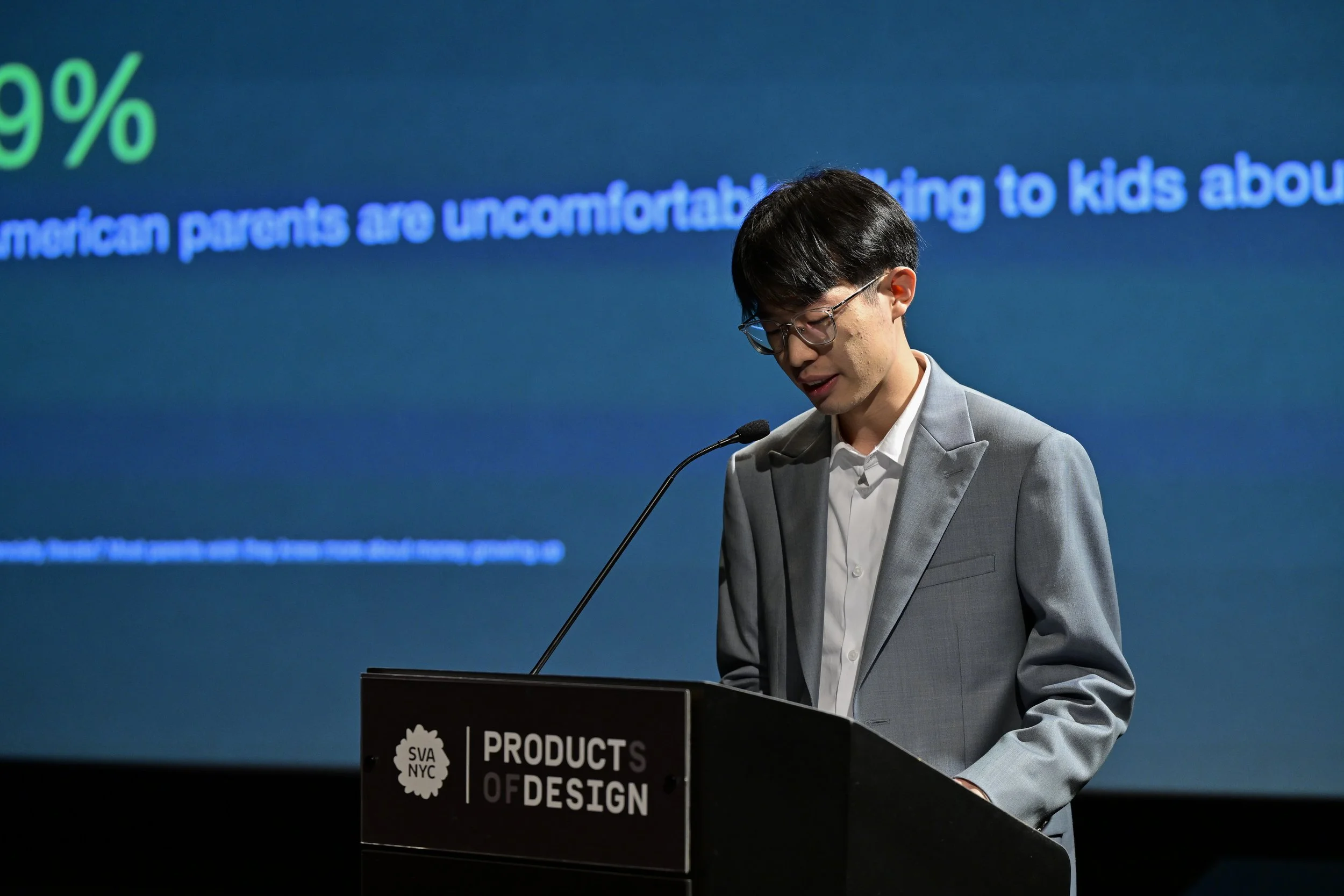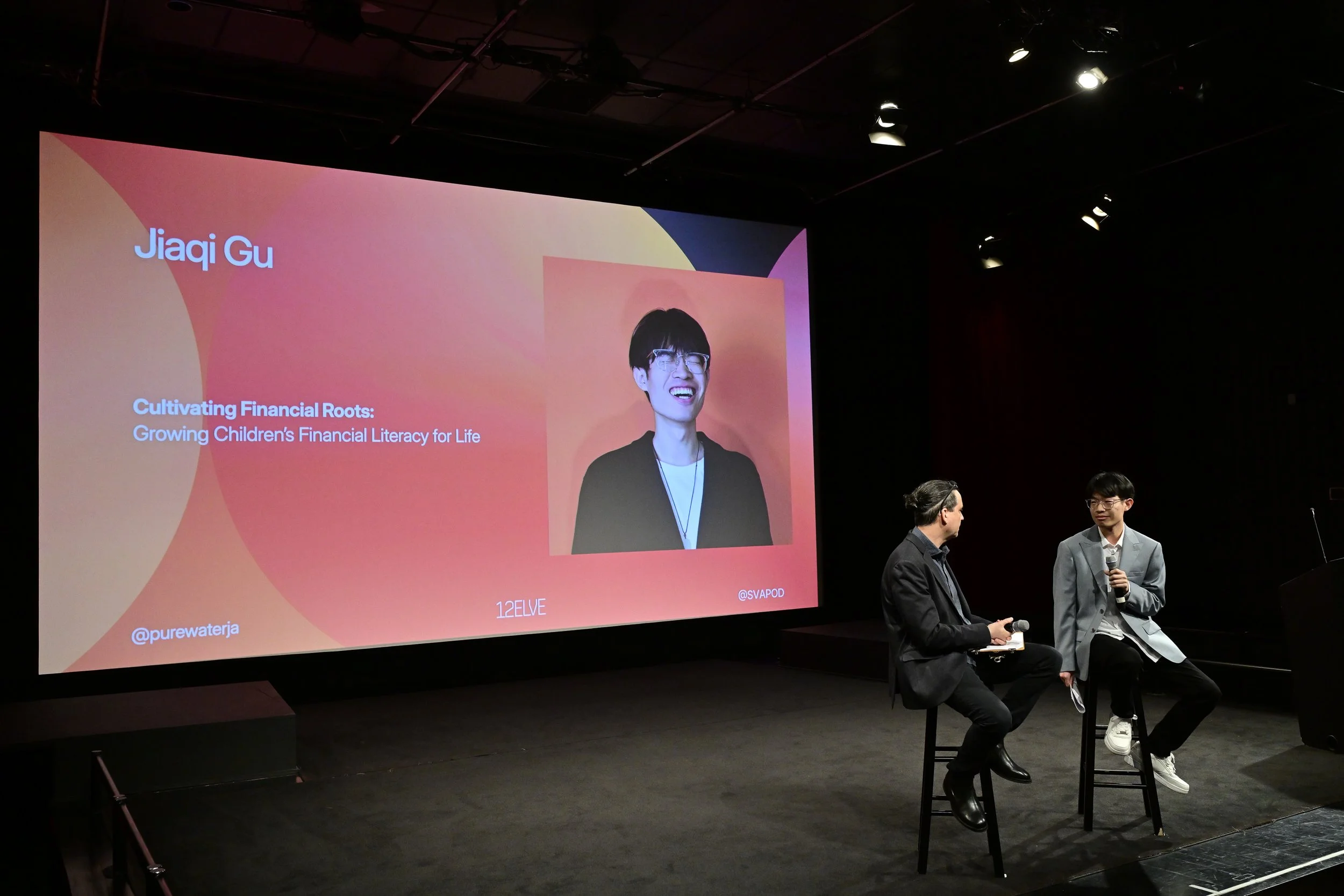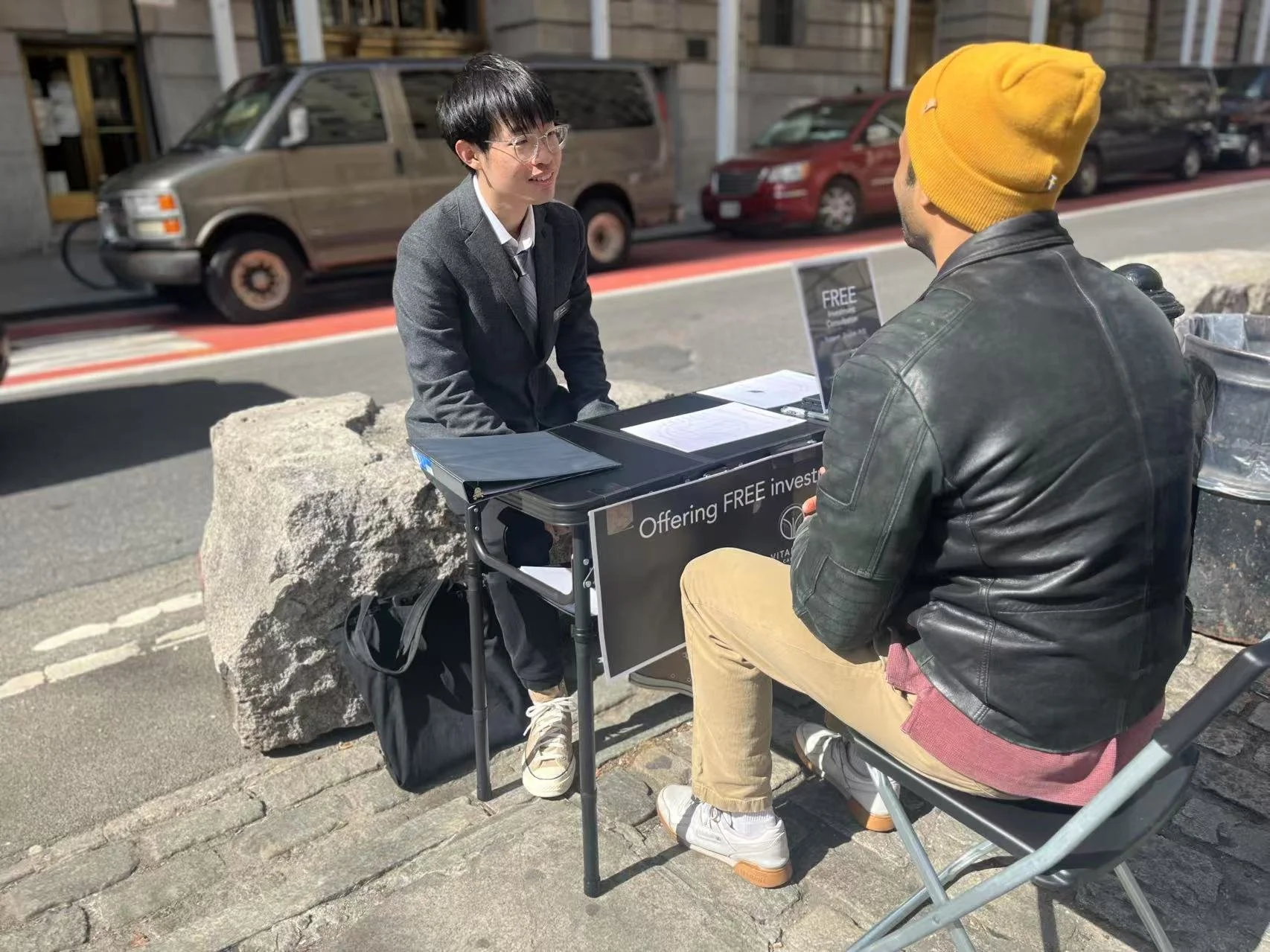Cultivating Financial Roots: Growing Children’s Financial Literacy for Life
Jiaqi Gu’s thesis, Cultivating Financial Roots: Growing Children’s Financial Literacy for Life, explores how early financial literacy can shape lifelong money habits. Growing up in a family where money was rarely discussed, Jiaqi experienced firsthand the confusion many young adults face when making major financial decisions for the first time. His project addresses this gap by focusing on children ages 6 to 12, a formative stage for developing lasting habits and attitudes toward money. Guided by the belief that financial education is not just about saving and spending, but also about designing a more secure and empowered life, Jiaqi’s work reimagines how families can talk about money through playful, meaningful experiences.
“What if children could grow up seeing money not as stress,
but instead, as a tool for freedom and choice?”









Money Farm
Talking about money with children is difficult for many parents. They may feel too busy, unsure, or worried about saying the wrong thing. In low-income families, conversations about money can be either overly heavy (with the risk of burdening children), or nonexistent, leaving kids unprepared. There is a need for lighthearted, natural ways to introduce financial literacy to young children through everyday family moments.
Money Farm is a farm-themed, card-based board game designed for children aged 6–9 and their parents. It introduces foundational financial concepts like assets, liabilities, and cash flow through playful farm-building metaphors. By turning money management into a collaborative and fun experience, the game creates natural opportunities for parent-child conversations, thereby helping plant the seeds for a healthier financial future.
CartWars
A family shopping trip offers a natural opportunity to build money habits. However, children often focus only on what they want, making it difficult for parents to teach budgeting skills in the moment. Jiaqi observed that families need a fun and engaging way to involve children in financial decision-making during everyday activities like shopping. With this in mind, he designed CartWars, a gamified budgeting app designed for 8–10 year olds and their caregivers.
CartWars transforms family shopping trips into interactive learning experiences by letting families set financial goals, co-create shopping lists, and manage budgets in real time. Children scan items, earn game coins for staying on budget, and reflect on their spending afterward—building lasting budgeting habits through play.
Moneypal
Many children grow up learning only how to spend money, not how to save, invest, or grow it. Almost half of Americans have never invested, and many parents—especially those without investment experience—don’t feel confident teaching their children about it. Families need an engaging, beginner-friendly way to build investment knowledge together. Moneypal is a digital simulation platform designed for 9–12 year olds and their parents, especially those new to investing.
Using pet-based storytelling, Moneypal transforms complex investment concepts into relatable narratives. Children follow their virtual pets as they “work” at companies, experiencing how market changes affect financial outcomes. Parents receive real stock insights and conversation tips, making it easier to build confidence and foster meaningful discussions about investing as a family.
LifeFund Planner
LifeFund Planner is a speculative consulting experience that invites users to treat values like happiness, health, hope, knowledge, and gratitude as their most important investments. Acting as a life value strategist rather than a traditional financial advisor, the project redefines what it means to plan for the future. By helping users build a portfolio of intangible assets, it challenges the dominance of monetary systems and expands the scope of financial literacy into personal meaning and long-term fulfillment.
For a deeper look into Jiaqi’s thesis process, research, and reflections, explore the following links:
Thesis Repository on Notion – a comprehensive archive of Jiaqi ’s thesis development
Thesis Blogposts on Medium – extended reflections and insights











